Wherever you go, be it a major chess site or YouTube, you will find opening videos or articles. With this much information, it should be easier than ever to excel in openings.
But in my experience, the overload of information has made it harder, not easier. With all that information looming, it is easy to get fear missing out (FOMO) on the latest trend.
My approach is a little bit different.
Instead of remembering all the lines and the latest trends, I always aspire to understand the openings I play.
This means, I study plans & structures extensively, so I can find my way at the board when it counts.
In this article, I will teach you my approach so you can start to understand your openings as well.
I have already written an extensive article about a way to find a fitting opening for yourself. If you did not read it yet, make sure to check it out first.
What Is Your Goal?
My whole approach in Chess is based on the goal of long-term improvement. This is very important to keep in mind when reading that article.
You will always be tempted to choose the easiest way. The way of just playing the engine line without understanding it. Or just buying a course and playing whatever that person suggests.
While these things might work in the short term, they have a big downside: without understanding, you will feel lost whenever your opponent deviates from what he “should” do.
You will complain about “having many good positions out of the opening, but screwing up all of them”.
This is not because you are bad.
This is just because you were not ready to study the basics.
Or because people that want to make money off you will tell you, “you don’t need them, I have cracked the code”…
One-Time Or Residual Results
A key factor in my approach is the idea of residual results.
It means that you put in an effort once, but then gain knowledge that is useful countless times.
Usually, the initial effort is bigger if you just search for one-time results, but in long term, you actually save a lot of time!
Or in the words of Greg McKeown in his latest masterpiece Effortless:
Not all knowledge has lasting value. Some knowledge is useful just once. For example, you memorize a fact for a test and immediately forget the material the moment the test is over… Other knowledge is useful countless times. When you understand why something happened or how something works, you can apply that knowledge again and again.
Greg McKeown
In Chess one-time knowledge include:
- Tricks that only work once
- Trying to memorize opening moves without understanding them
- Following Engine suggestions instead of using your own brain
Residual knowledge on the other hand is when you:
- Play an opening with a deep strategical idea
- Learn the structure and plans of an opening
- Ask questions while analyzing with an Engine
If your cheap trick is in the opening database, you will never be able to use it anymore. On the other side, if you manage to outplay your opponent because of your deeper knowledge, you can repeat that over and over again.
No matter what you think about Elon Musk (I’m not a huge fan either), you should acknowledge that he is a genius and visionary par excellence. And here is how he thinks about knowledge:
It is important to view knowledge as a sort of semantic tree. Make sure you understand the fundamental principles, the trunk and big branches, before you get into the leaves, or there is nothing for them to hang on to.
Elon Musk
French Tarrasch
Let me show you what can happen if you have residual results in mind:
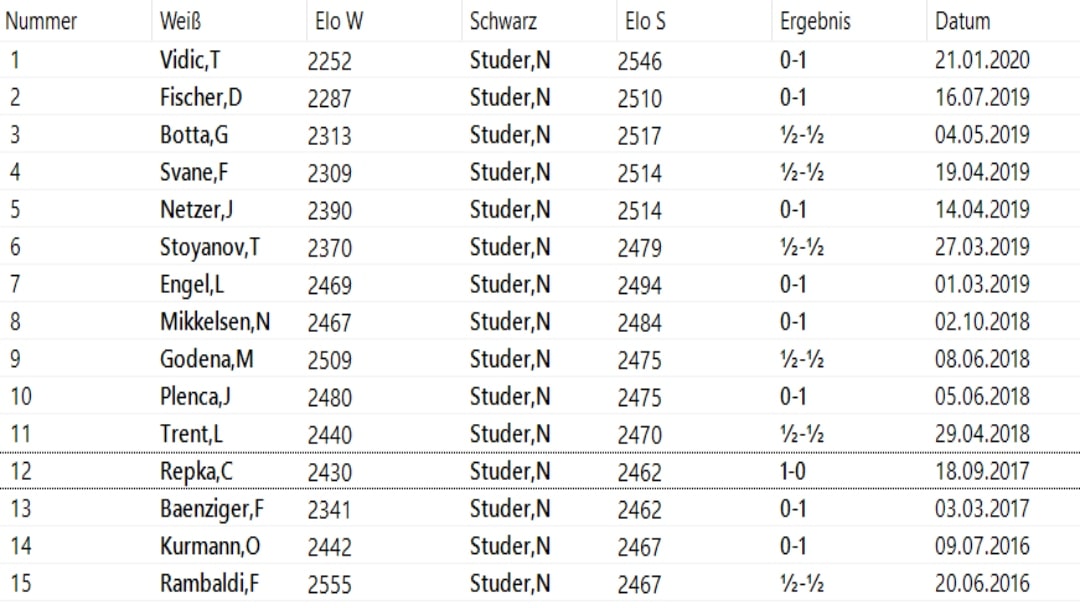
I scored an incredible 73.3% with black in these 15 games in the French Tarrasch.
What is even crazier is that I was winning in most of the games that ended in a draw (and should not have lost that one game against Repka).
Against Rambaldi -1.5 after 16 moves, against Trent I messed up a -7 position and against Stoyanov, I was winning after 18 moves as well!
Now, some of you might say: well you were just extremely well prepared in that line. Actually, it is the opposite.
As it was very clear to my opponents that I will play this line, usually they were “better” prepared. By “better” I mean that they were blitzing out more moves than they memorized.
But, I had studied the position and structure in depth in a training camp with my former Coach GM Iossif Dorfman. So, whenever I faced a new move, I could rely on my principles and knowledge.
While I understood the principles and the trunk, my opponents only had the leaves. I simply played the position much better than my opponents and outplayed them.
If you click through those games they will all seem similar. Let me explain to you the basics that my opponents missed.
Basics Of French Tarrasch Variation
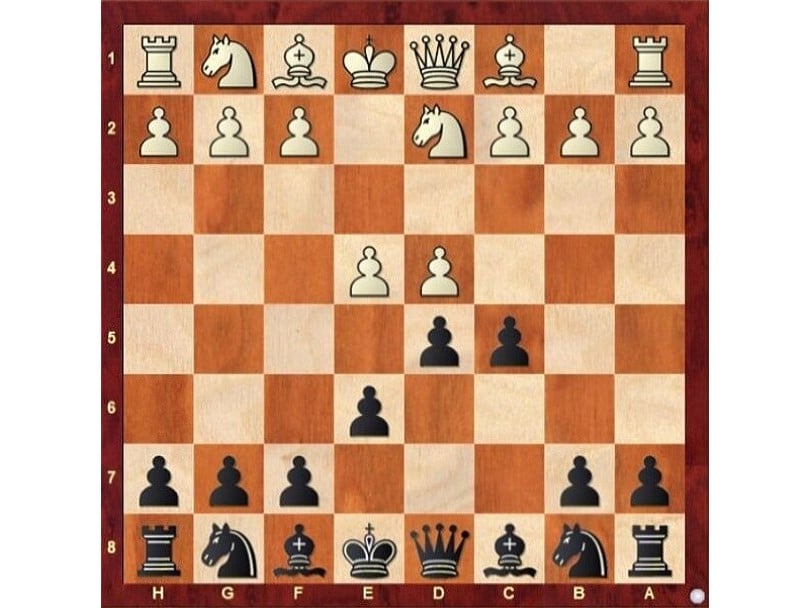
This is the initial position I was talking about. There are many different lines, but the structure will be the same. White E&D pawns will be exchanged for black d&c pawns.
Structure
Which will leave white with 3 pawns on the Kingside and 3 on the Queenside. Black on the other hand has 4 on the Kingside and 2 on the Queenside.
This difference is essential. The 3 pawns on the Queenside leave white with an advantage in a possible endgame. Why? Because he will have the outside passed pawn (because most likely both kings will castle to the king-side).
Black, on the other hand, has better chances in the middle game.
Why?
Because the e-pawn might be able to run up the board. Whenever black gets e5(e4) and f5 in, the white King on g1 will start to feel very bad.
Pieces
Black would like to castle king-side. Put his Bishops on d6 and b7 (they look nicely at white’s king on g1), his Queen on c7, Knights on d7 & f6 (maybe going to d5/f5 to allow f5), and Rooks on f8 & e8 (to prepare for e5 f5).
White on the other side should try to limit Black’s piece activity, if not it can get uncomfortable. One way to do it is to put a blockading Knight on e5.
What is the key is to understand that White needs to act quickly & carefully in order not to be run over.
Now let’s see what happened in some of the games.
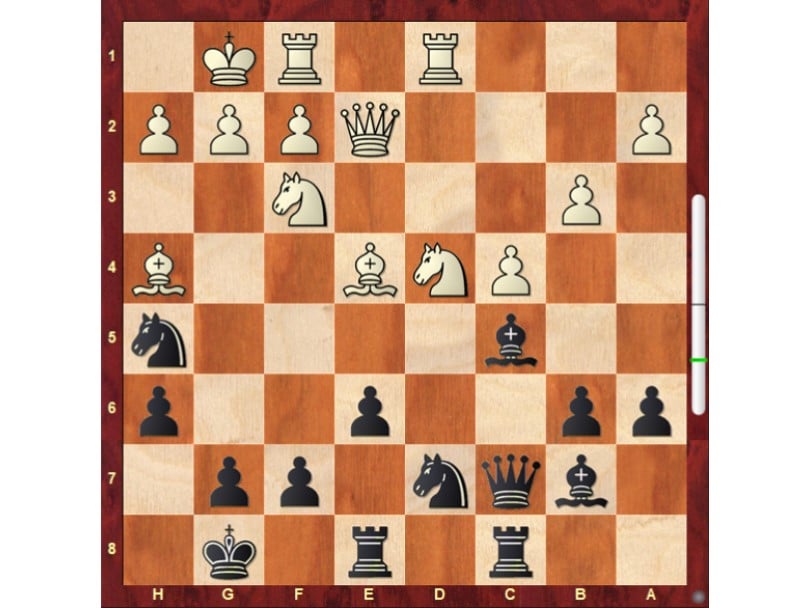
My pieces are nearly all in their perfect spot! Now the time was ripe for 19…e5 20.Nf5 Bxe4 21.Qxe4 Ndf6 where I will push e5-e4 and achieve a big advantage.
Even with the knowledge of this game, the next opponent had an even worse outcome of the opening:
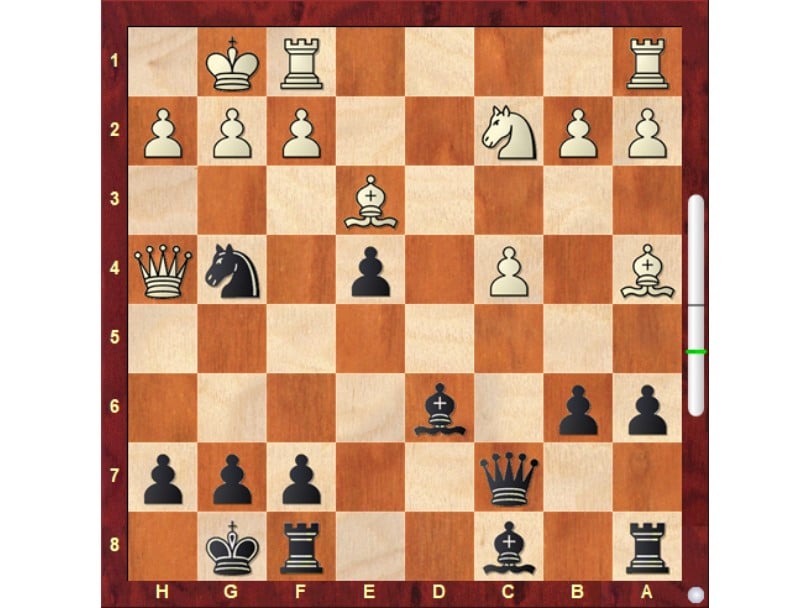
Black already pushed his pawn on e4, while the White queen-side counterplay is nowhere. After 19.h3 Be7 20.Qg3 Qxg3 21.fxg3 Nxe3 I got the Bishop pair and a passed pawn on e4. I won the game quite easily.
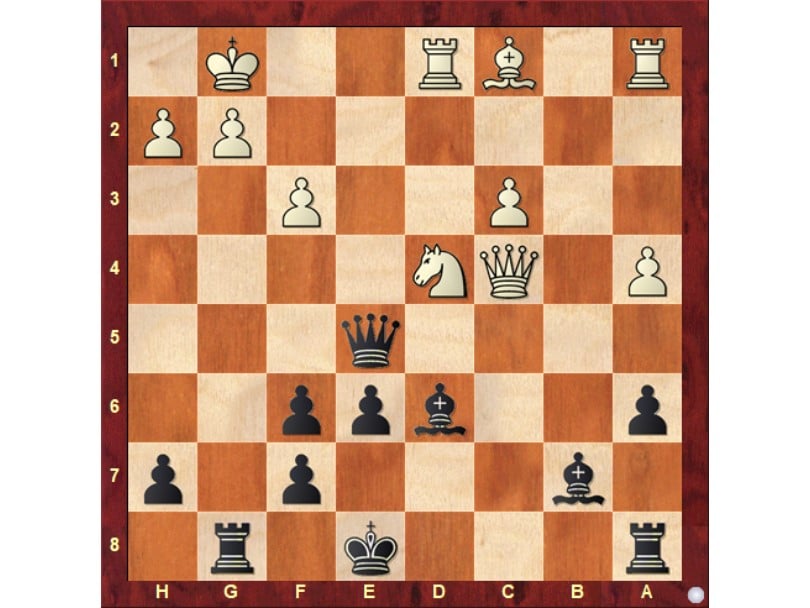
This has been a crazy side-line, but still, the principles apply. As a matter of fact, my opponent had a nice idea and some advantage out of the opening. But he did not know how to treat the position!
I applied my deep knowledge and he did not play courageously enough, so he ended up in this horrible position.
My two Bishops are monsters and White is getting mated. Note that the King on e8 is much safer than the one on g1.
All these examples have one thing in common: White got attacked because he did not play actively enough to stop my optimal setup.
So, why did these strong players allow me to win with the same principles over and over again?
Because they prepare with an Engine and simply follow the suggestion.
They try to take the shortcut: learn the leaves before understanding the fundamentals and the trunk.
This does simply not work most of the time!
They maybe found an idea that showed as +0.3 for White and thought “this is better, I will play it”.
Whenever it came to them playing by themselves, they did not really understand the position and went wrong very soon after.
On my side, I invested a full week in this one structure before playing any game.
With this upfront investment, I then won 8 games with Black in the same line over the course of 4 years.
While my opponents searched for ideas the whole night before the game, I slept like a baby.
I obviously still need to memorize some forced lines, but way less. And whenever I am surprised I have these deep principles to base my decisions on.
How To Make Your Own Analysis With The Help Of ChessBase
Now that you know the potential of my approach, I hope you are ready to follow the steps to get residual results.
I will now guide you through my full opening analysis process. This process includes the use of the program ChessBase 16.
As I already stated in previous articles, I am not very fond of this company. Their handling of the Fat Fritz 2 incident was far from spectacular. But their program is simply the best-paid version on the market.
It definitely is not cheap either and there are some free options you can check out if you wish:
- Lichess analysis (online)
- Chess.com analysis (online)
- Arena (free software)
The possibilities are limited, but they should be good enough to start out.
Also with these possibilities, you will profit from reading this article. While the user interface might be different, the ideas and processes stay the same.
1) The Perfect Set-Up For Opening Analysis
Before you start with the opening analysis, you need to have an optimal setup on your Chess Program.
What I recommend is having the following things in one tab:
- Chess Board
- Notation
- Online Database
- Stockfish 13
On a more advanced level, you can start to work with 2 Engines at the same time. This is what I do. I usually work with both the newest version of Stockfish and Leela Chess Zero.
The work with several Engines is only helpful at Top Level (I would say 2400+ FIDE). Below I would urge you to stick to simplicity and use Stockfish alone.
Again, this tutorial will lead you through the process with ChessBase 16. If you use another chess Software, make sure to try to get to a similar point.
As I have never used another program, I am not the person to explain to you how to do it with other programs. But I am sure you will find your answers on the magical Google.
You automatically have a Board, Notation, and Online Database if you have ChessBase 16. But you will need to download the latest version of Stockfish and then install it on ChessBase.
And here is how you do it:
- Go to stockfishchess.org/download.
- Choose the appropriate version for you depending on your PC/Laptop.
- Download it to your PC/Laptop.
- Go into your ZIP folder and copy the application (you only need this one file!) somewhere you will find it later on.
- Go to Chessbase, open a new Board, and click on “Create UCI Engine” on the Top.
- Click on the three dots next to Engine and search your Computer for the Stockfish application.
- Go to Parameter and put the Contempt to 0.
- Click on OK. Your Engine is now ready, you will find it when clicking “Add Kibitzer” at the Top.
Now you can open a new Board. Then you click on “Online” in the Top left. This will open your Online Database.
Click on “Add Kiebitzer” and double-click on Stockfish 13 that you just downloaded. I like to have 2-3 engine lines open. To change the number of moves suggested, you can click on the small + or – just next to the CPU field.
Now your set-up should look like mine:
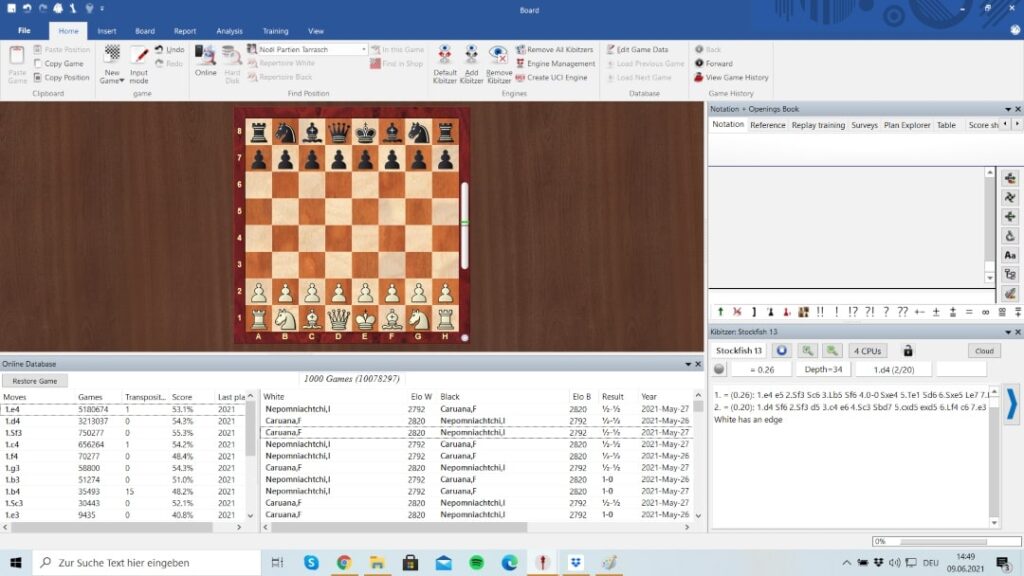
2) Understanding the Main Features
In order to work optimally, you should understand the main features, especially of the online Database. Here they are:
- Moves: shows all the moves played in the current position
- Games: the number of games played with the “move” mentioned
- Transposition: number of games that will transpose to the position after playing the move mentioned
- Score: the score of white in all the games played with this move
- Last played: the year of the last game played with this move
In the “games” section you can see the most important games for the current position from a theoretical standpoint. I recommend you adjust the fields so that you can see the notation from the most important games (see below).
You should always have an eye out for the number of games (that is why the most played move is the highest up) and the score.
Small differences in scores are not relevant. But if a move is scoring 5% better than the other moves, it is worth looking into that move.
This simply means this move works best in practical games up to now, exactly what we are looking for!

This is a great example of combining different features. 12.a4 is not the most played move. But it has a lot speaking for itself:
- The score is more than 10% higher than all the other lines (the score of Rb1 with 22 games is not really representative)
- The Engine prefers this move
- 5 of the most important 10 games saw 12.a4
This is a good indication that 12.a4 should be the first move to look at. If not…
3) Start With The Mainline
Before getting into details with sidelines, you want to knock off the Mainlines. It would be very sad to lose many hours on side-lines, only to find out that you do not like the Mainline at all.
Another reason why you have to start with the Mainline is the evolution of Chess theory. Usually, there are some key ideas that you will find in the Mainlines.
These ideas will appear again in the Sidelines. If you first get what the main point of the opening is, it will be much easier to understand certain new ideas in the Sidelines.
You could argue that the Mainline is the fundamentals, while the Sidelines are only leaves existing because of the fundamentals.
The Mainline is usually the line that is played the most.
As you are preparing for a practical game, the moves that are played the most are always the most important for you!
If you have played the opening already but simply never analyzed it, then start with your own games!
You simply copy all of your played games into that file and start looking for the moment where you have gone wrong. Improve on each one and you have a very nice opening file ready!
For those of you that still struggle with what exactly to do, I have recorded a small video. I take you through some key insights when doing your own analysis.
4) When Should You Stop Your Opening Analysis?
Let us shortly remember what the goal of the analysis is. It is to understand the principles of a line and where your pieces should go.
So whenever you feel that you understand where your pieces go, and what the plan is, you can stop the analysis for now. The nice thing is that you can always stop, see how it works in practice, and then go back and go a bit deeper.
In the example of the Benko-Gambit line above, I would stop at the following moment:
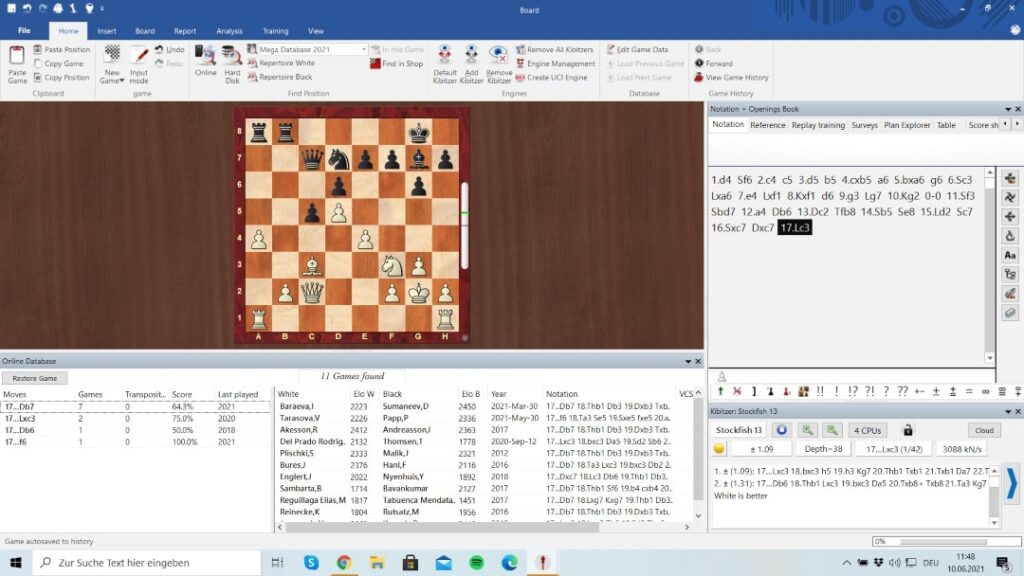
The biggest asset of Black’s position is his Bishop on g7 and the pressure on b2. The biggest problem for White is his Bishop on c1, who sometimes cannot move because b2 is hanging.
In this position, White solved his biggest problem and will exchange the biggest asset of Black! The rooks belong to a1+b1 and the knight has a free way for his standard maneuver Nf3-d2-c4.
With that in mind, I feel very confident to be able to play that position!
Now it is time to go back move per move and look for alternatives for black, and what you have to respond there.
Do not lose time with very bad or seldom moves in the beginning. As I said: you can always go deeper! The first step is to have a 30’000 foot overview of an opening. The more you then test it in practice, the deeper you can go.
I say it again: do not obsess about moves, but rather plans and ideas!
5) Analysis And Tournament File
If you do this process enough times, your opening files start to get big.
The idea of this analysis is not to look at it once and then forget about them.
These files are there so you can look at them before a game and get a fast overview of what you have to do and why.
This is where the idea of the “tournament file” is coming into play. The tournament file is simply a summary of your analysis. In a short amount of time (5-10min) you should have all the most important lines and ideas refreshed with this file.
Tournament File vs Analysis File
What are the basic differences between a tournament file and an analysis file?
The tournament file has to be:
- Clean (no long variations, no unedited full 80-move games)
- Containing only one possibility for you on every move (more possibilities will confuse you before a game!)
- Short and to the point!
Here is what my analysis file can look like:
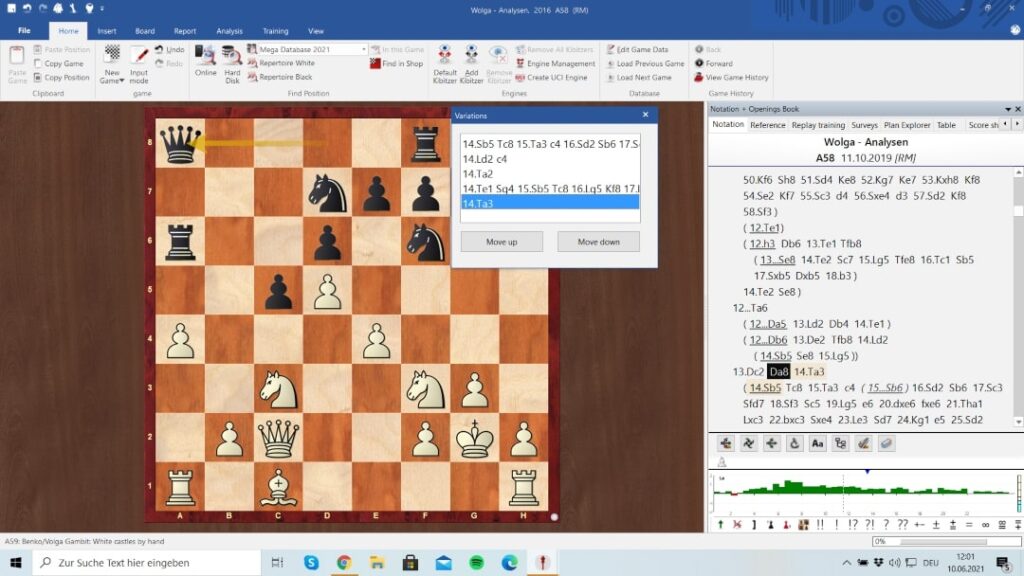
As you see there are 5 different possibilities for white on that move. If I would look at this before a game, it would be extremely confusing. Which one of those should I play? And why?
These analyses helped me find out what the actual move is that I want to play. But now I need to have a file that is crystal clear as to what I think is best and why. Here is what that looks like:

As you see there is only one move left! 14.Ra3 is what I have decided for. You can also see that there is some text in there. Why? Because explaining the decisions to myself will help me recall them during the game when I need it.
If you cannot go through and remember your tournament file in less than 15 minutes, then it is too big!
This counts especially for sidelines like the Benko Gambit. There should be only the absolute minimum in it.
Summary
I know this was a lot of information, but I also know this might change your life when it comes to opening analysis. So take your time, don’t be too harsh on yourself, and just do one step at a time.
Here is a short Summary of getting to analyze openings like a GM:
Mindset:
- Focus on residual results
- Plans instead of Engine moves
- Understanding the structure
- Bigger upfront investment, but long-term benefits
Step by step:
- Download Stockfish 13 and set up your ChessBase
- Understand the Main features
- Start with the Mainlines
- Stop when you know your plans and piece placement
- Summarize all your knowledge into a very small tournament file
I really hope this helps to clarify some of the many opening questions I get every day. I had more than a decade to get to where I am now with opening analysis.
If I can already half that period for you, then this article was successful.
As always, I am looking forward to your feedback.
And let me know: What is the first opening you will analyze in that way?
Sincerely,
Noël
P.S.: If you liked this article you will certainly also like my FREE guide to organizing your chess training. Get it now HERE.